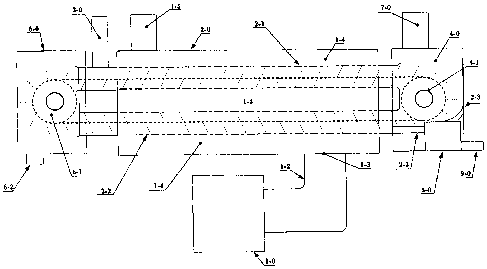Some of the information on this Web page has been provided by external sources. The Government of Canada is not responsible for the accuracy, reliability or currency of the information supplied by external sources. Users wishing to rely upon this information should consult directly with the source of the information. Content provided by external sources is not subject to official languages, privacy and accessibility requirements.
Any discrepancies in the text and image of the Claims and Abstract are due to differing posting times. Text of the Claims and Abstract are posted:
| (12) Patent: | (11) CA 2768189 |
|---|---|
| (54) English Title: | AN APPARATUS FOR DECOMPOSING RUBBER PRODUCTS THROUGH PYROLYSIS |
| (54) French Title: | APPAREIL DE DECOMPOSITION DE PRODUITS EN CAOUTCHOUC PAR PYROLYSE |
| Status: | Granted and Issued |
| (51) International Patent Classification (IPC): |
|
|---|---|
| (72) Inventors : |
|
| (73) Owners : |
|
| (71) Applicants : |
|
| (74) Agent: | BORDEN LADNER GERVAIS LLP |
| (74) Associate agent: | |
| (45) Issued: | 2017-08-29 |
| (86) PCT Filing Date: | 2010-07-15 |
| (87) Open to Public Inspection: | 2011-01-20 |
| Examination requested: | 2015-07-15 |
| Availability of licence: | N/A |
| Dedicated to the Public: | N/A |
| (25) Language of filing: | English |
| Patent Cooperation Treaty (PCT): | Yes |
|---|---|
| (86) PCT Filing Number: | PCT/MY2010/000122 |
| (87) International Publication Number: | WO 2011008074 |
| (85) National Entry: | 2012-01-13 |
| (30) Application Priority Data: | ||||||
|---|---|---|---|---|---|---|
|
The present invention relates to a carbonization reactor (1 -0) to decompose used rubber products and the like by heating the rubber products under constant high temperature and the reactor comprise a conveyor (2-0) which continuously move and drag the rubber products through cylinders (2-1, 2-2) where the decomposition process takes place to produce recyclable by products such as carbon black, oil vapour and the like.
L'invention concerne un réacteur de carbonisation (1-0) destiné à décomposer des produits en caoutchouc usagés et analogues par chauffage de ces produits à une température constante élevée et le réacteur comprend un transporteur (2-0) qui se déplace en continu et traîne les produits en caoutchouc à travers des cylindres (2-1, 2-2) où se déroule le processus de décomposition en vue de produire des sous-produits recyclables tels que du noir de carbone, de la vapeur d'huile et analogueS.
Note: Claims are shown in the official language in which they were submitted.
Note: Descriptions are shown in the official language in which they were submitted.

2024-08-01:As part of the Next Generation Patents (NGP) transition, the Canadian Patents Database (CPD) now contains a more detailed Event History, which replicates the Event Log of our new back-office solution.
Please note that "Inactive:" events refers to events no longer in use in our new back-office solution.
For a clearer understanding of the status of the application/patent presented on this page, the site Disclaimer , as well as the definitions for Patent , Event History , Maintenance Fee and Payment History should be consulted.
| Description | Date |
|---|---|
| Common Representative Appointed | 2019-10-30 |
| Common Representative Appointed | 2019-10-30 |
| Grant by Issuance | 2017-08-29 |
| Inactive: Cover page published | 2017-08-28 |
| Inactive: Final fee received | 2017-07-20 |
| Pre-grant | 2017-07-20 |
| Notice of Allowance is Issued | 2017-04-20 |
| Notice of Allowance is Issued | 2017-04-20 |
| Letter Sent | 2017-04-20 |
| Inactive: Approved for allowance (AFA) | 2017-04-11 |
| Inactive: Q2 passed | 2017-04-11 |
| Amendment Received - Voluntary Amendment | 2017-01-04 |
| Inactive: S.30(2) Rules - Examiner requisition | 2016-07-04 |
| Inactive: Report - No QC | 2016-06-30 |
| Inactive: Correspondence - MF | 2016-02-05 |
| Inactive: Office letter | 2015-12-24 |
| Inactive: Office letter | 2015-07-30 |
| Inactive: Office letter | 2015-07-30 |
| Letter Sent | 2015-07-23 |
| All Requirements for Examination Determined Compliant | 2015-07-15 |
| Appointment of Agent Request | 2015-07-15 |
| Revocation of Agent Request | 2015-07-15 |
| Request for Examination Received | 2015-07-15 |
| Appointment of Agent Request | 2015-07-15 |
| Revocation of Agent Request | 2015-07-15 |
| Maintenance Request Received | 2015-07-15 |
| Request for Examination Received | 2015-07-15 |
| Request for Examination Requirements Determined Compliant | 2015-07-15 |
| Letter Sent | 2015-01-28 |
| Inactive: Multiple transfers | 2015-01-13 |
| Inactive: Reply to s.37 Rules - PCT | 2012-04-27 |
| Inactive: Cover page published | 2012-03-20 |
| Inactive: IPC assigned | 2012-02-29 |
| Inactive: IPC assigned | 2012-02-29 |
| Application Received - PCT | 2012-02-29 |
| Inactive: First IPC assigned | 2012-02-29 |
| Inactive: Request under s.37 Rules - PCT | 2012-02-29 |
| Inactive: Notice - National entry - No RFE | 2012-02-29 |
| Inactive: IPC assigned | 2012-02-29 |
| National Entry Requirements Determined Compliant | 2012-01-13 |
| Application Published (Open to Public Inspection) | 2011-01-20 |
There is no abandonment history.
The last payment was received on 2017-06-20
Note : If the full payment has not been received on or before the date indicated, a further fee may be required which may be one of the following
Please refer to the CIPO Patent Fees web page to see all current fee amounts.
Note: Records showing the ownership history in alphabetical order.
| Current Owners on Record |
|---|
| 2198725 ONTARIO INC. |
| Past Owners on Record |
|---|
| CHISTOPHER JOHN WEBB |
| MAZLAN ALI |
| SITI FATIMAH MOHD SHARIFF |